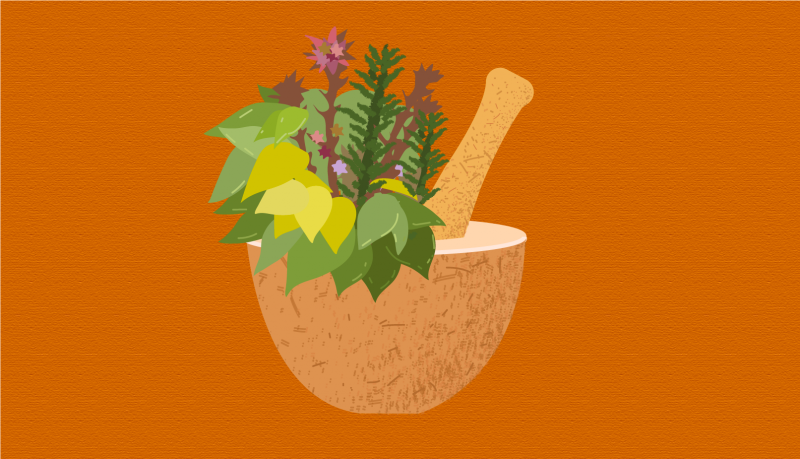Ayurveda is an ancient Indian holistic medical practice encouraging self-healing through the mind, body and soul; and it helped me heal.
In his book Ayurveda: The Science of Self-Healing, medical practitioner and professor of Ayurvedic Medicine Dr. Vasant Lad writes that Ayurveda is concerned with eight branches of medicine: pediatrics, gynecology (female health), obstetrics (childbirth), ophthalmology (eyes), geriatrics (elder health), otolaryngology (ear, throat and nose), general medicine, and surgery.
According to Lad, each branch is addressed according to theories of the five elements (ether, air, fire, water and earth), the tridosha, and the trinity of life (body, mind and spiritual awareness). The tridosha are three energies that define a person’s makeup: Vata (air and space), Pitta (fire and water) and Kapha (water and earth).
An ayurvedic practitioner will determine your constitution through tests like observing the tongue, nail health, taking your pulse, etc. They ask questions about your health in detail, from your bowel movements to how you sleep. Your makeup is then determined and you’ll receive a plan to help you heal and balance your doshas.
My experience
My symptoms of nausea, bloating, indigestion, etc. worsened and hadn’t faded after over five years of visiting various doctors. My family doctor dismissed my symptoms and blamed them on my anxiety. My gastroenterologist (without testing me) dismissed me by concluding I had a “sensitive stomach” and recommended I remove meat from my diet (which I already had). I was fed up and lost hope when I noticed additional complications like iron deficiency, among other things.
After visiting Bita Bitajian, an ayurvedic practitioner at the Transformation Ayurvedic Center in St-Lambert, I was told my makeup is Pitta-Kapha: I am full of fire and warmth, making me intelligent, sharp, emotional but tolerant, calm and loving. I gain weight easily and have trouble turning my mind off to sleep.
With my symptoms, I was diagnosed with aggravated Vata, which can throw my doshas off balance. I had to drastically change my diet for more than a month: no carbs and gluten, fermentation or processed sugar, limited starch and dairy intake, and I had to avoid bananas. I basically ate grass for a month because I don’t eat meat and usually only eat carbs. I also had strict rules to follow: eat before 1 p.m. and not after 8 p.m., drink rose tea twice daily, go to sleep before midnight, go to the gym three times a week and practice yoga and meditation almost daily.
I didn’t realize how much the food I ate actually impacted how I felt. Since I was so often dismissed by my family doctor, food intolerances didn’t really cross my mind; I didn’t think my symptoms were as severe as they actually were.
After one week, I felt lighter; I wasn’t bloated or nauseous, nor was I running to the bathroom every hour. Despite the difficult diet, the initial results were enough for me to stick with it. I was very strict with my diet, I tried to go to the gym as much as I could and I focused on breathing exercises every night to help with my insomnia and anxiety. I felt incredible after two weeks.
Now
Seven weeks in, I’m fed up with the diet but incredibly grateful for the results. I occasionally get indigestion and get bloated, but not like before. This journey has taught me to be mindful of what, how, when, and why I eat. I learned it’s important to listen to your body and provide the proper nutrients to function at its maximum potential. I even started slowly integrating some things back into my diet and am now looking to get tested for gluten intolerance.
I would recommend Ayurveda to anyone who feels stuck and needs to change their lifestyle and habits. If you need physical and spiritual healing, this could be a great option for you.
Graphic by @sundaeghost
